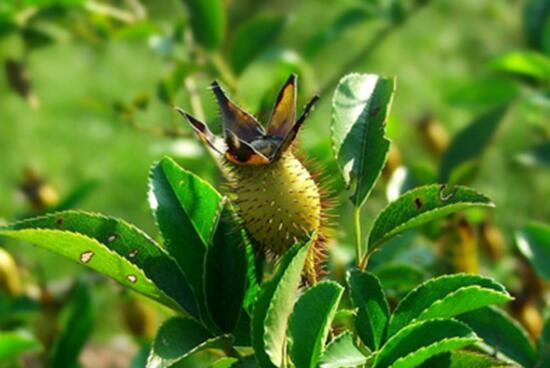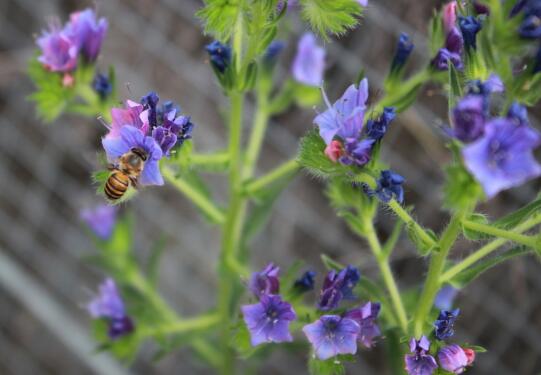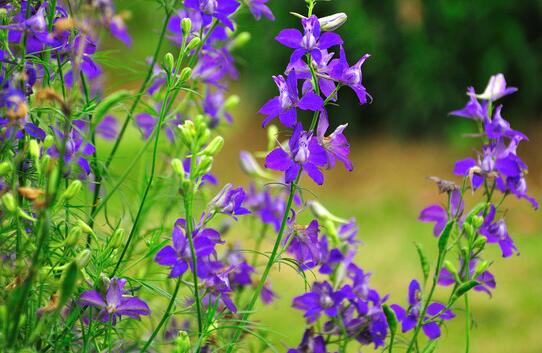How to reproduce golden cherry, the four propagation methods / cutting sowing is the most practical.
For the golden cherry, people who have seen it should be no stranger, its white and pure flowers, sweet and delicious fruit, are impressive. Because the efficacy of golden cherry is amazing, whether making wine or tea is beneficial to human health, so golden cherry is multiplied in large numbers, so how to reproduce golden cherry? Here are four propagation methods of golden cherry, of which cutting and sowing are the most practical. Let's go and have a look.
How to reproduce, cuttage / sow golden cherry

Just look at the shape, the golden cherry pure white flowers let people like, and then its fruit, full of thorns, is simply a dangerous "beauty". As for how to reproduce golden cherry, as far as the editor knows, generally adopt the way of sowing reproduction and cutting propagation. However, in addition to this, the breeding methods of golden cherry also include ramets and strips, which are introduced by the editor below.
2. Four propagation methods of golden cherry (1) cutting propagation of golden cherry
Among the propagation methods of golden cherry, cutting is the most practical and convenient, which is suitable for the majority of flower friends. The specific operations are as follows:
1. Cutting time
As long as the temperature and moisture requirements are up to the standard, golden cherry cuttings can be carried out at any time, but the temperature should not be too high, otherwise the roots will rot, and the plant growth will become slow if it is too low. However, in terms of climate, golden cherry cuttings are the best in spring and autumn.
2. Cuttings selection
In the cuttage propagation of golden cherry, the selection of cuttings is particularly important, it has been selected, and the whole propagation process is basically more than half successful. On the healthy golden cherry, cut off the disease-free buds as cuttings.
Note: after the cuttings are selected, they need to be operated immediately, because if they are placed for too long, the small buds will wither and it will not be easy to grow into a plant.
3. Cutting method
Insert the small bud cut into the plant ash, keep the soil quality for 24 ℃, and water properly to keep the soil moist. Then seal with a film to reduce the loss of moisture, but also play a certain role in heat preservation. In addition, after wrapping the film is not breathable, you can regularly open the breathable, do not think troublesome flower friends can pierce a few holes to breathe.
(2) sowing and propagation of golden cherry.
Golden cherry has a long flowering period and will bear fruit after flowering, so sowing and reproduction can be taken. Specific operation: according to the cultivation method of golden cherry, the loose and fertile soil is selected as the sowing substrate, and then the golden cherry seeds are scattered directly into the soil. Keep the air humid after planting, cover the basin mouth with plastic wrap and poke several small holes. However, because it is difficult for golden cherry seeds to survive after planting, not many people are cultivated in this way.
(3) ramet propagation of golden cherry.
The twigs that will be separated from the roots of the golden cherry can be taken out alone to survive. So you can cut off the branch where it is connected to the matrix and plant it on another substrate, so that you can make more pots in one pot.
(4) striping propagation of golden cherry.
Striping is also one of the breeding methods of golden cherry, we can choose the old branch to crimp. Specific operation: bury the strong, long-growing branches in the soil and wet the soil with a spray can. Soon, the pressed branch will take root on its own, and then cut it off from the matrix with a knife, carry out water-light maintenance, and then survive.
Generally speaking, the breeding of golden cherry can be done by cutting, sowing, dividing plants and pressing strips, but the only thing most suitable for the majority of flower friends is cutting, so we can learn it, and we don't need to master it. With regard to the breeding method of golden cherry, the editor has introduced this, hoping to give you some help.
The propagation method of golden cherry fruit the function of golden cherry fruit
Golden cherry, also known as mountain pomegranate, is an evergreen shrub that can climb and grow. The golden cherry blossoms are as white as snow, full of fragrance and refreshing. Next, let's take a look at the breeding methods of golden cherry and the knowledge of its function.
Brief introduction of Golden Yingzi
Golden cherry is an evergreen shrub, up to 5 m tall, branchlets stout; leaflets leathery, with petioles 5-10 cm long; leaflets 2-6 cm long, apex acute or obtuse, sparsely caudate-acuminate; petiolules and leaf rachis with prickles and glandular hairs.
Flowers solitary in leaf axils, 5-7 cm in diameter; pedicels 1.8-2.5 cm long, occasionally 3 cm, pedicel and calyx tube densely covered with glandular hairs, turning into needles as fruit grows; sepals ovate-lanceolate, apex leaflike, margin pinnately lobed or entire, often with prickles and glandular hairs, inner surface densely pilose, slightly shorter than petals; petals white, broadly Obovate, apex retuse; stamens numerous. Carpels numerous, style free, hairy, much shorter than stamens. Fruit Pyriform, Obovate, sparsely globose, purple-brown, outside densely prickly, fruiting pedicel ca. 3 cm, sepals persistent. The florescence is from April to June and the fruiting period is from July to November.
The propagation method of golden cherry fruit
Golden cherry seeds are generally propagated by sowing and cutting methods, mainly by cutting propagation.
1. Seed propagation
Sow fresh seeds in winter, open shallow ditches according to 750px row spacing, spread seeds evenly into ditches, cover soil with 37.5px, and sow 30-37.5kg per hour. Spring emergence in the second year, 2-3 years after emergence, transplanting in spring.
2. Cuttage propagation
Before sprouting in spring, select strong mother plant, cut 1-2-year-old branches as cuttings, length 12-375px, obliquely insert in sand bed, press, water, keep moist regularly, cover with Reed curtain for shade. It can take root and sprout after about 2 months. It was transplanted from February to March or September to October in the following year. 40-1500px holes were opened according to row and plant spacing, and 1 plant was planted in each hole, compacted with soil cover and watered.
The function of golden cherry fruit
Golden cherry has the effects of solid contraction, urine contraction, antitussive, antispasmodic, hypolipidemic, antibacterial and anti-inflammatory effects. Those who have real fire and evil heat should not be used because of their convergent characteristics. And golden cherry fruit should not be eaten with cucumbers and pig livers.
Introduction to the reproduction of golden cherry
Golden cherry blossoms in summer, the flowering period is very long, up to 4 months, the ornamental value and economic value are very high. Generally, it can be propagated by sowing, cutting, ramet, pressing and grafting.
Golden cherry fruit
First, sowing seeds
Seeds can be used to raise seedlings, but it is generally not recommended to use seeds for cultivation because it is difficult to survive. In production, it is easy to survive by raising seedlings with tender wood cuttings in the same year. Valuable varieties are more difficult to cuttage.
2. Ramets
That is, the propagation method is to cut off the small branches of the root and stem base of the plant where they are connected to the mother plant, and then plant them separately to make them grow into independent new plants. This method is simple and easy, and the survival is quick. It is widely used in horticulture.
Third, cuttage
Cuttage, also known as cuttings, is a common method of breeding plants. It is easy to survive if the seedlings are raised by cuttings of tender wood in the same year. Choose branches that are strong and free from diseases and insect pests as cuttings. After selecting the cuttings, you should handle them carefully. Cuttings of tender cuttings should be cut immediately after harvest to prevent wilting from affecting survival. In general, the lower cut of plant cuttings, such as some freshly burned plant ash, has the effect of preventing decay. For general plant cuttings, 20 ℃ 25 min rooting is the fastest. If the temperature is too low, the rooting is slow, and if the temperature is too high, it is easy to cause the cutting incision to rot. Therefore, if the temperature is artificially controlled, it can be cut all the year round. Under natural conditions, the temperature in spring and autumn is suitable. After cutting, we should pay attention to keep the cutting substrate moist, but do not make it too wet, otherwise it will cause rot. At the same time, we should also pay attention to the humidity of the air, can be covered with plastic film to maintain humidity, but should pay attention to ventilation in a certain period of time.
Fourth, pressing strips
In the propagation of rose, the older branches of superior varieties should be selected and the seedlings should be raised by striping method. Striping is a method by which the branches and vines of a plant are buried in a wet substrate and cut off from the mother plant after taking root to form a new plant. The adult plant rate is high, but the reproduction coefficient is small, which is often used when it is difficult to reproduce by other methods, or when it is necessary to reproduce larger new plants. Striping is a method of artificial asexual reproduction (vegetative reproduction) of plants. Unlike grafting, the branch remains intact, that is, it does not leave the mother plant, buries part of it in the soil, and then disconnects from the mother plant after it takes root.
5. Grafting
The seedlings propagated by grafting and asexual reproduction can blossom in the same year. For seedlings used as potted flowers, the older branches of the superior varieties should be selected.
- Prev

How to reproduce delphinium, what are the propagation methods / sowing / cutting
Delphinium is a kind of flower plant originating in Europe, which was introduced to China. Nowadays, there are many people planting it in our country, but with more and more people growing it, people are more concerned about its reproduction. So how does delphinium multiply? What are the breeding methods of swallows?
- Next

How to grow delphinium, the planting method and precautions / avoid stagnant water
Delphinium is a kind of highly ornamental flower plant, which can be seen in many gardens in our country, and many people want to plant a delphinium at home, so how to grow it? This point is introduced in the article on the breeding methods of delphinium, which you can learn about.
Related
- Fuxing push coffee new agricultural production and marketing class: lack of small-scale processing plants
- Jujube rice field leisure farm deep ploughing Yilan for five years to create a space for organic food and play
- Nongyu Farm-A trial of organic papaya for brave women with advanced technology
- Four points for attention in the prevention and control of diseases and insect pests of edible fungi
- How to add nutrient solution to Edible Fungi
- Is there any good way to control edible fungus mites?
- Open Inoculation Technology of Edible Fungi
- Is there any clever way to use fertilizer for edible fungus in winter?
- What agents are used to kill the pathogens of edible fungi in the mushroom shed?
- Rapid drying of Edible Fungi

